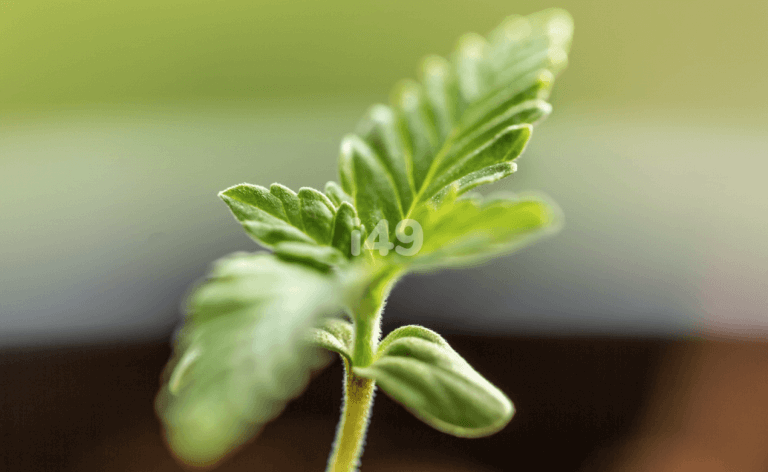
Germinating Cannabis Seeds: 7 Best Ways to Sprout Weed
Aug 31, 2022
Germination & Seedling Stage
Content
- Why do I need cannabis germination?
- How to germinate marijuana seeds
- Germinating seeds in paper towels (highly recommended)
- Germinating cannabis seeds in water (the easiest)
- Germinating cannabis seeds in soil
- Germinating cannabis seeds in jiffy pots
- Germinating cannabis seeds in Rockwool
- Germinating cannabis seeds in plastic bags
- Germinating cannabis seeds in hydrogen peroxide
- Frequently asked questions about the cannabis germination process
Interested in cultivating a crop of cannabis but worry it’s too difficult? Many prospective farmers feel similarly, but the reality is raising pot has never been easier. Fantastic options like beginner seeds allow newcomers to get in on the action and grow their own marijuana.
Once you’ve chosen your preferred beginner-friendly strain, the first step on the path to pot is germinating your cannabis seeds. Are you ready to learn everything there is to know about this crucial process? If so, get comfortable, and let’s get started.

Why do I need cannabis germination?
There are two main ways to raise a ganja garden. The first method is sourcing clones to populate your cultivation space. These are sections of an adult plant that have been removed and treated so that they produce a new root system.
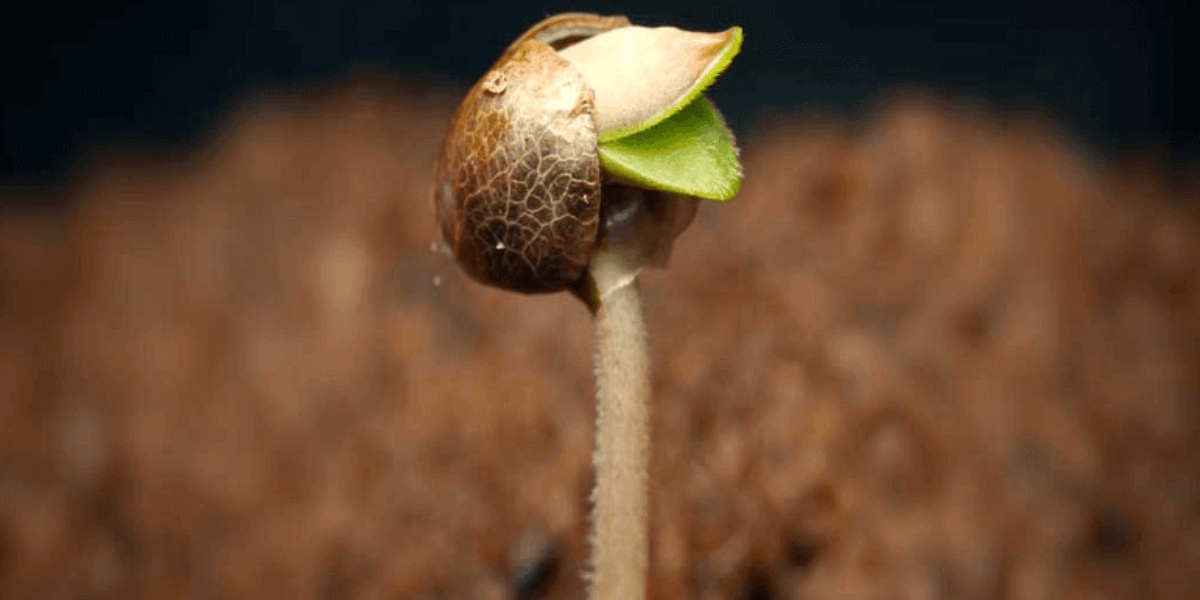
Cultivating cannabis from clones has its benefits and is the method of choice for many commercial operations. They guarantee consistency and reach harvest quicker but aren’t without their downsides.
These crops finish faster by skipping the marijuana seedling stage but possess a less developed root system. As a result, they tend to produce smaller plants with lower yields than marijuana sprouting from seeds.
Clones are initially extremely sensitive and highly vulnerable to environmental changes or stressors. While experienced growers might know how to care for the tender plants successfully, it could prove trickier for beginners.
These drawbacks make the second method more suitable for small-scale cultivators and novice growers. That is, growing a weed plant from a seed. Germination is the first stage of all plant growth.
To get going, you need to know how to germinate marijuana seeds successfully.
The process begins when environmental triggers cause seeds to “wake” from their dormant state. With the right temperature and the presence of water and light, the seeds open up and begin to grow.
Cannabis is part of a group of flora classified as dicotyledons. These kinds of plants grow foliage in alternating pairs. Seeds from most members of this category, including cannabis, undergo epigeal germination.
Over the following sections, you’ll understand the germination process and learn how to accomplish it using various methods. By the time you reach the end of this article, you’ll be equipped to sprout seeds like a pro.
How to germinate marijuana seeds
You’ve got your beginner seeds; now, let’s take a quick look at how this process works in germinating weed seeds.
- When the right conditions exist, the seed opens, sending out a tiny shoot called a radicle that affixes the seed to the soil and begins growing small roots.
- Next, the seed sends out another shoot, called a hypocotyl, which develops into the plant’s main stem. It often grows so rapidly that the seed casing is lifted into the air with its rise.
- The plants’ first pair of proto-leaves emerge from the seed casing. These tiny oval cotyledons serve to provide nutrients and perform an initial round of life-giving photosynthesis.
- As the seedling gains independence, a new shoot called a plumule appears from between the cotyledons. This growth bears the first true foliage of your baby pot plants.
- Once the seedling possesses more leaves, the cotyledons are no longer necessary and shrivel off soon after.
Cannabis seed germination is a reasonably hands-off process. To get it started, you just need to create favorable conditions. Three main things are required; warmth, moisture, and then light.
Various germination methods exist, and they all achieve the same goal if performed correctly. Each creates an environment with at least 70–90% relative humidity and temperatures between 69.8–78.8°F.
While some growers may warn you off one method or advise the use of another, there’s usually some subjectivity at work. Most horror stories about cannabis seeds not germinating are often caused by other factors such as poor quality or improper storage.
Avoid these situations by buying quality products and learning how to store pot seeds correctly if you’re not planting them immediately. Follow these tips, and they should sprout successfully regardless of the method used.
With that in mind, the best way to germinate your cannabis seeds is the method you’re most comfortable with. The following sections detail seven different ways to get started.
Germinating seeds in paper towels (highly recommended)
The paper towel method is our preferred choice if you want to learn how to germinate weed seeds cheaply and quickly. It only requires a few household objects.

Seeds that started using this method usually germinate between 24–120 hours.
- Pros: Cost-effective and straightforward to set up. It results in speedy germination and is easily monitored without disturbing the process.
- Cons: Seeds that germinate on paper towels may fuse to the towels if not moved promptly. Removing them in this state might damage the tender taproot. Monitor their progress closely and pot them as soon as they open.
What will you need?
Before learning how to start marijuana seeds using this method, you’ll need a few things.
- 2–4 absorbent paper towels. Alternatively, use cotton wool pads, but ensure they aren’t treated with any cosmetic compounds.
- Some purified or bottled water. Avoid using tap water as it may contain chlorine or other additives that could negatively affect germination.
- Two medium-sized plates.
Paper towel method: Step-by-step
Once you have the necessary ingredients, these steps outline how to germinate cannabis seeds in paper towels.
- Moisten some paper towels using purified water. Squeeze out the excess liquid afterward, leaving the towels sufficiently damp but not soaking wet.
- Take a plate and place a damp towel on top. Arrange your cannabis seeds on the paper, leaving an inch of space between each one. Then cover them with another moist towel.
- Take the second plate, turn it over and use it as a lid for the first. Closing the seeds in like this helps the towels remain moist for longer and raises the humidity levels around them.
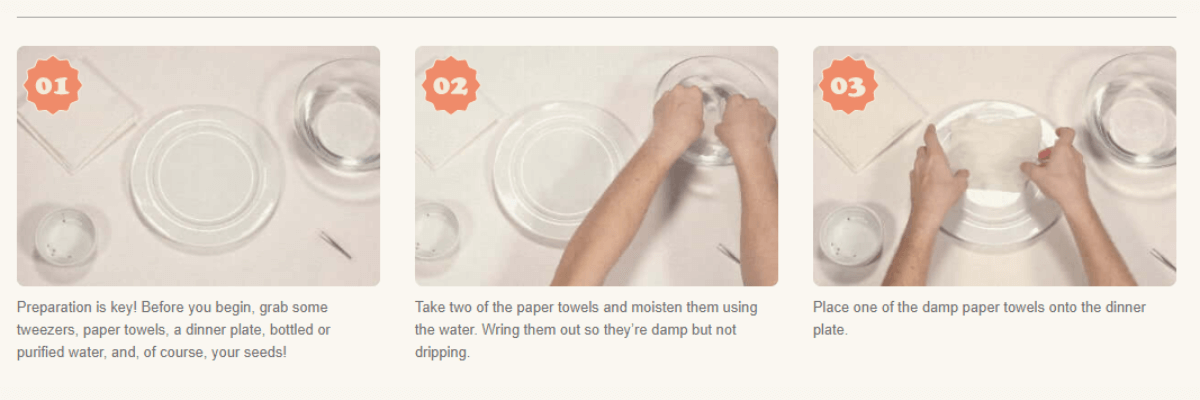
- Take the plates and put them somewhere dark and moderately warm. If your ambient temperatures are below the 69.8°F necessary for germination, you may need to use a heat mat.
- Check your seeds’ progress twice daily, spritzing the towels with water to keep them moist.
- Your marijuana seeds should pop open between 24–120 hours.

- Use sterilized tweezers to carefully transplant them to their starting pots as soon as they open.
- Place them in a hole in the soil about half an inch deep, with the taproot facing down.

Germinating cannabis seeds in water (the easiest)
If you want to learn how to germinate cannabis seeds with minimal effort and equipment, this method is perfect. Sometimes known as the tumbler method, it’s especially effective for older marijuana seeds.

- Pros: A low-cost method requiring a minimal amount of work. Completely submerging the seeds in water leads to accelerated germination.
- Cons: Inattentive growers could easily end up drowning their seeds. Keep a close eye on their progress; leaving them submerged after they open may quickly rot the taproot. Another minor drawback is that removing the seeds from the glass is finicky.
What will you need?
Getting the necessary equipment for this method should take you two minutes. Here’s what you need:
- Purified or dechlorinated water.
- A container to contain the liquid and seeds. Most use a simple tumbler or glass. Avoid using too tall or narrow ones, as they’ll only make it harder to pluck the seeds out once they open.
Water soaking germ method: Step-by-step
Grab what you need and then follow these exceedingly simple steps:

- Pour some water into your container of choice, filling it about halfway to avoid any spills. The water should be lukewarm, between 70–80°F.
- Pop your seeds into the water. Give it a gentle stir to dislodge any air bubbles clinging to the seed exteriors.
- Leave the seeds overnight to soak in the water. Those with thin casings should open in the first 24–36 hours.
- Monitor the seeds closely and remove any opened ones from the water immediately.
- Plant any germinated seeds, as before, in starting pots about a half inch deep, taproot down.
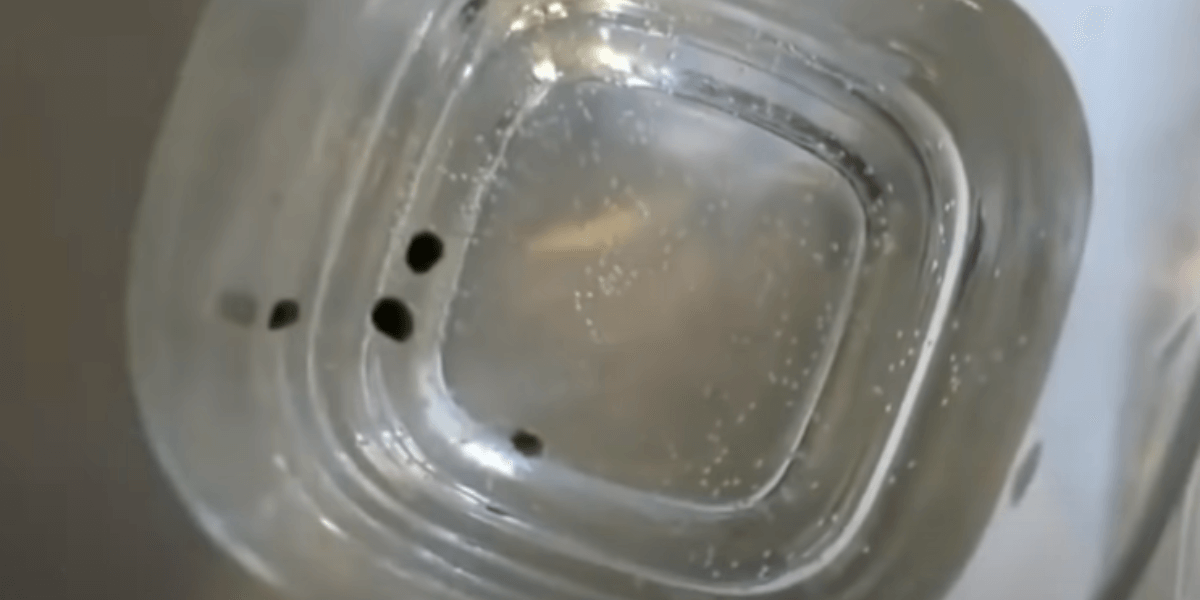
Germinating cannabis seeds in soil
Organic growers may be wondering how to start marijuana seeds in the most natural way. The answer is to germinate directly in the soil.
While some growers aren’t fans of this method, it’s entirely viable and shouldn’t be dismissed.
Plant in favorable soil with a pH of six, and they should sprout once the temperature and humidity are right.
- Pros: It allows you to grow cannabis as nature intended. Seeds planted this way have immediate access to nutrients in the soil. If performed correctly, this germination method involves the least amount of manipulation, limiting opportunities to damage the seed.
- Cons: It’s more challenging to regulate humidity and temperature in large bodies of soil. Burying the seed beneath the surface prevents growers from checking on their progress and may cause them to disturb it, slowing its growth or damaging it outright. This method is slower than others, taking 4–10 days.
What will you need?
You don’t need much to germinate cannabis seeds in soil. The requirements are:
- Soil: Use lightly fertilized, loamy potting soil. The pH of your substrate should sit at around six or slightly more acidic.
- Container: Even if you’re growing outdoors, planting the seeds in containers is recommended. Using appropriately sized pots makes it easier to regulate moisture. Keeping the crops separate also means pathogens won’t spread as easily as they would in a large body of soil.
Soil germ method: Step-by-step
Here’s how to plant weed seeds directly in the soil for germination.
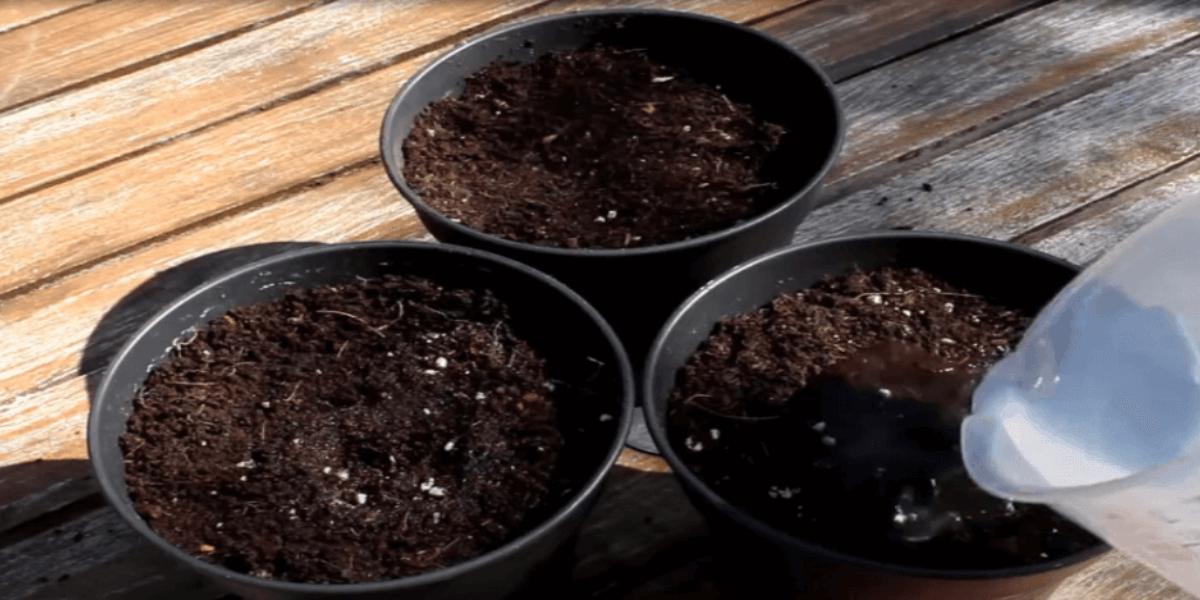
- Fill a pot with your preferred substrate.
- Feed it using water or a nutrient solution, depending on your substrate. You may also add rooting agents at this point.
- Give the substrate some time to absorb the liquid before planting. Make a depression in the surface about half an inch deep and place the seed inside. Cover with a layer of soil, pressing down gently.
- Keep the soil moist and monitor each day. Your seeds should sprout within a few days but may take up to ten.

Germinating cannabis seeds in jiffy pots
Jiffy pots or soil plugs are an excellent means of weed seed germination that strike a nice balance between other methods. These little blocks usually have an ideal mix of peat and wood pulp.
- Pros: Easy to use and transplant. Possess a balance of moisture retention and aeration. Like with direct planting, the seed remains undisturbed during the entire process.
- Cons: Some growers won’t appreciate not being able to check on the progress of their seeds.
What will you need?
Get together the following to begin:
- Jiffy pots: There are many brands and choices in various sizes. Go with the smaller-sized ones if available.
- Water: Like all methods, use dechlorinated, purified water, ideally, with a pH between 6–6.5.
- Humidity Dome / Germination chamber: Using a dome or propagation chamber keeps relative humidity levels high and prevents the jiffy pots from drying out.
Jiffy pots method: Step-by-step
Follow these steps to have your cannabis seeds sprouting in a jiffy:
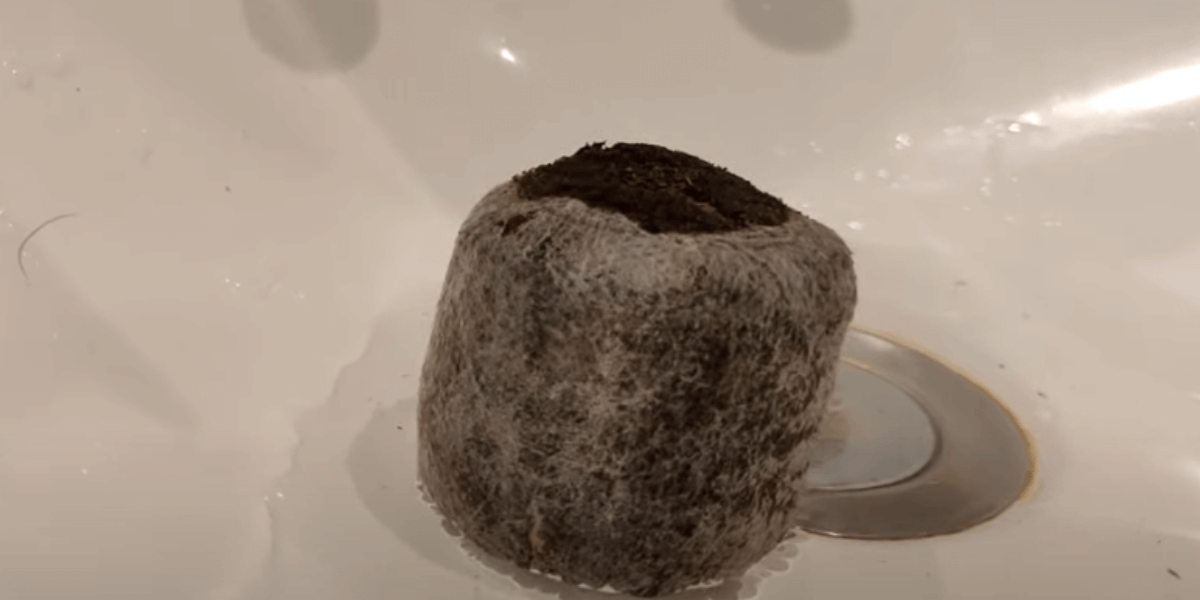
- Place your jiffy pots into your germination chamber and prepare the water. Consider adding a seed germination booster or beneficial bacteria like Trichoderma or mycorrhizae to promote rapid root growth.
- Hydrate the pots using your water solution and allow them to expand fully. Give them a gentle squeeze to remove excess liquid and introduce some air into the substrate.
- Use something like a pen or chopstick to make a small hole in the top of the jiffy about half an inch deep.
- Put one of your seeds in the hole you made, fill with peat and gently press down. Place the germination chamber somewhere at a suitable temperature.
- Regularly moisten the jiffy pots while waiting for the cotyledons to emerge.
- The seedlings can stay in the chamber until their first true leaves form; just ensure they receive enough light.
- Transplant directly into larger pots afterward.
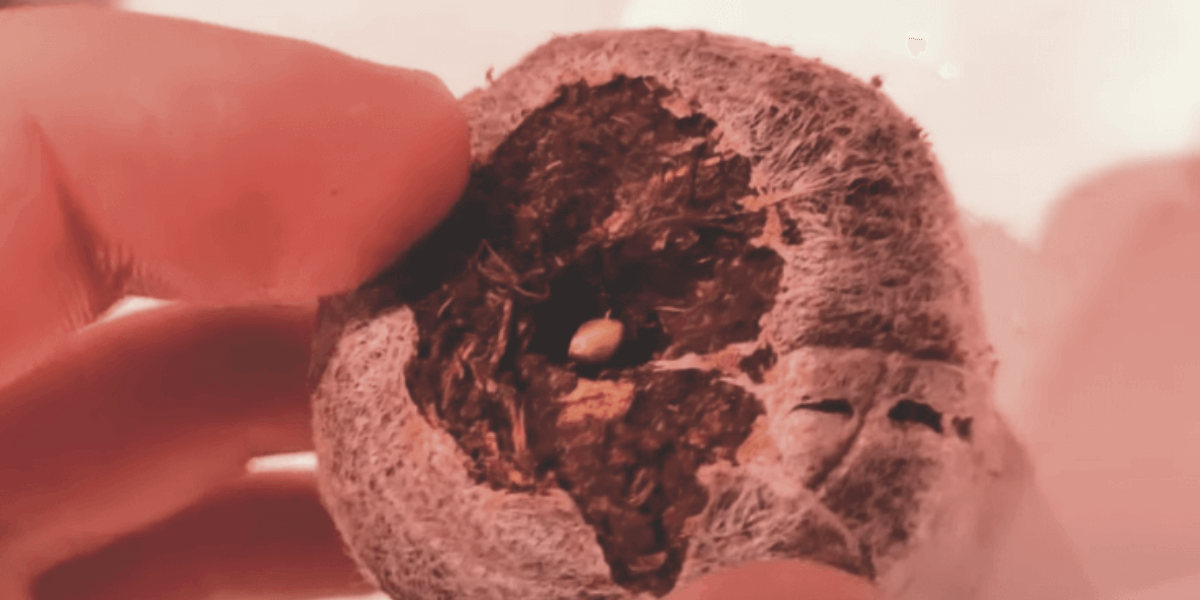
Germinating cannabis seeds in Rockwool
It’s possible to use Rockwool cubes when growing in soil, but they’re most often employed in hydroponic setups. These synthetic blocks of fiber work in much the same way as jiffy pots, providing a porous substrate for growth while retaining sufficient moisture for germination.
- Pros: Rockwool cubes are the best way to start weed seeds for hydroponic growing as they’re easily integrated directly into the system.
- Cons: Rockwool isn’t great for the environment, and inhaling the fibers may cause irritation.
What will you need?
For Rockwool germination, you need to have the following items to hand:
- Rockwool cubes.
- Water: Rockwool doesn’t contain any nutrients, so prepare water with a light amount of fertilizer and any rooting agents or germination boosters.
- Humidity Dome / Germination chamber: As with jiffy pots, Rockwool is best kept inside a germination chamber.
Rockwool seed germination: Step-by-step
This way of how to start weed seeds is almost identical to the jiffy pot method. Follow this simple five-step process:
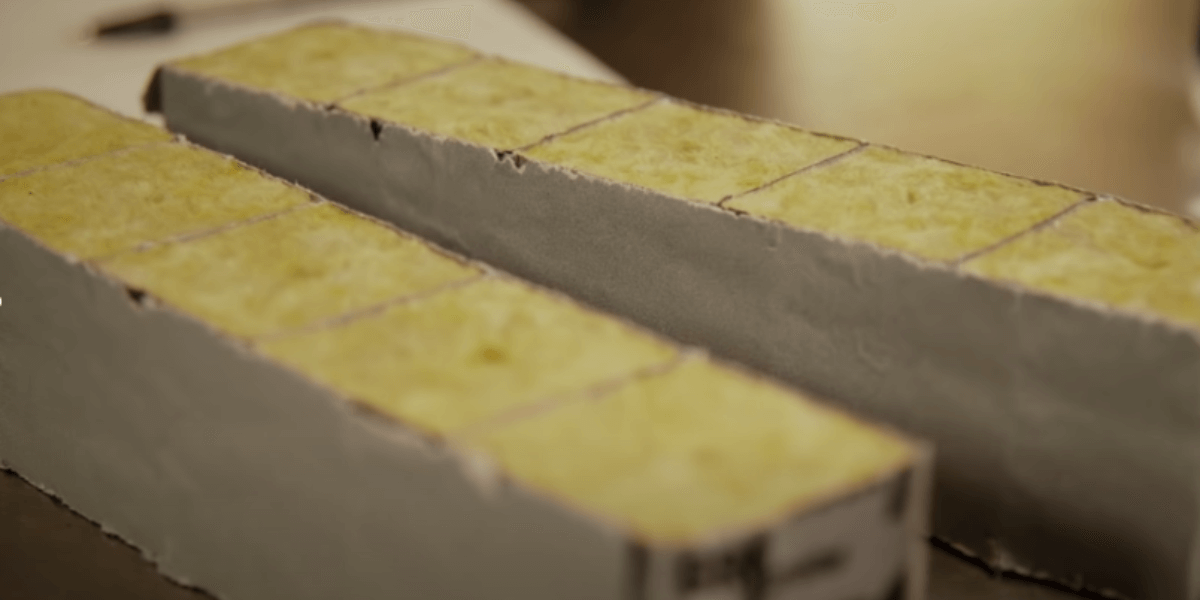
- Hydrate the cubes using the water/nutrient mix. Shake off any excess liquid.
- Poke a half-inch hole in the top of the cube and place a seed inside. Gently pinch the hole closed afterward.
- Put the cubes inside the propagation chamber and place them somewhere at a suitable ambient temperature.
- Keep the cubes moist, and your seeds should sprout within a week.
- Transplant the cubes to larger pots when roots show through the bottom.
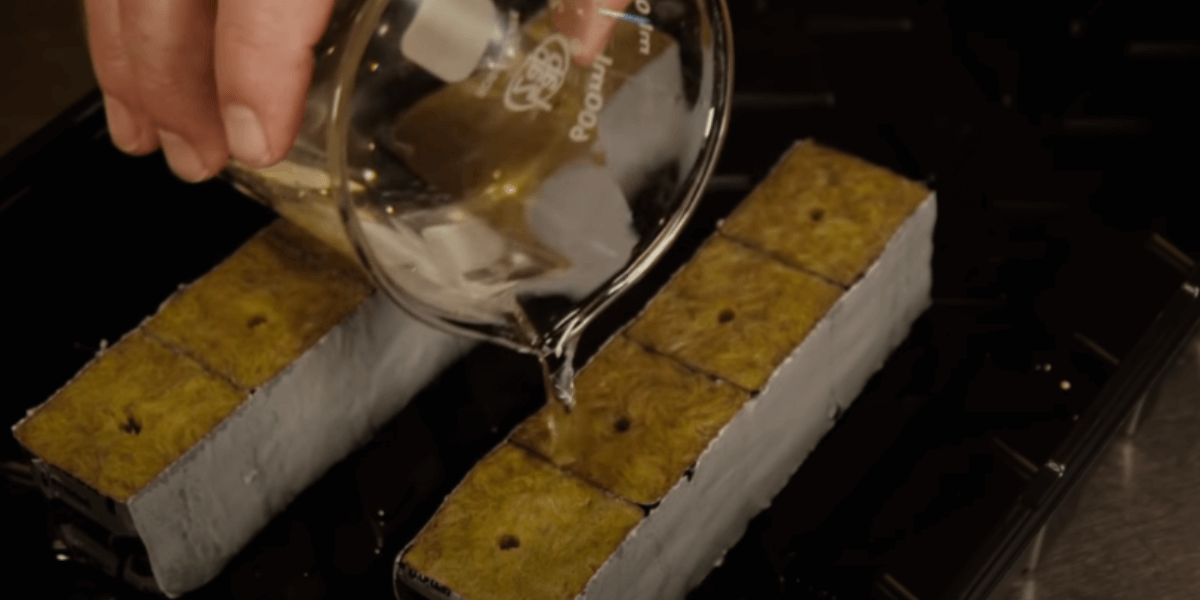
Germinating cannabis seeds in plastic bags
This method is really just a variation of the paper towel method. Instead of using two plates to trap moisture and humidity, the towels are placed inside of a sealable plastic bag.
- Pros: Retains high levels of moisture leading to rapid germination.
- Cons: Has the potential to suffocate sprouted seeds if left inside too long.
What will you need?
Gather the following:
- Absorbent paper towels or cotton pads.
- Purified, dechlorinated water. Germination boosters and rooting agents may be added at this stage if desired.
- A sealable plastic bag. Ziploc sandwich ones work fine. Ensure you use a fresh, unused bag and not one that previously contained any food.
Sprouting seeds in plastic bags: Step-by-step
Learn how to germinate a weed seed in a plastic bag by following these four easy steps:
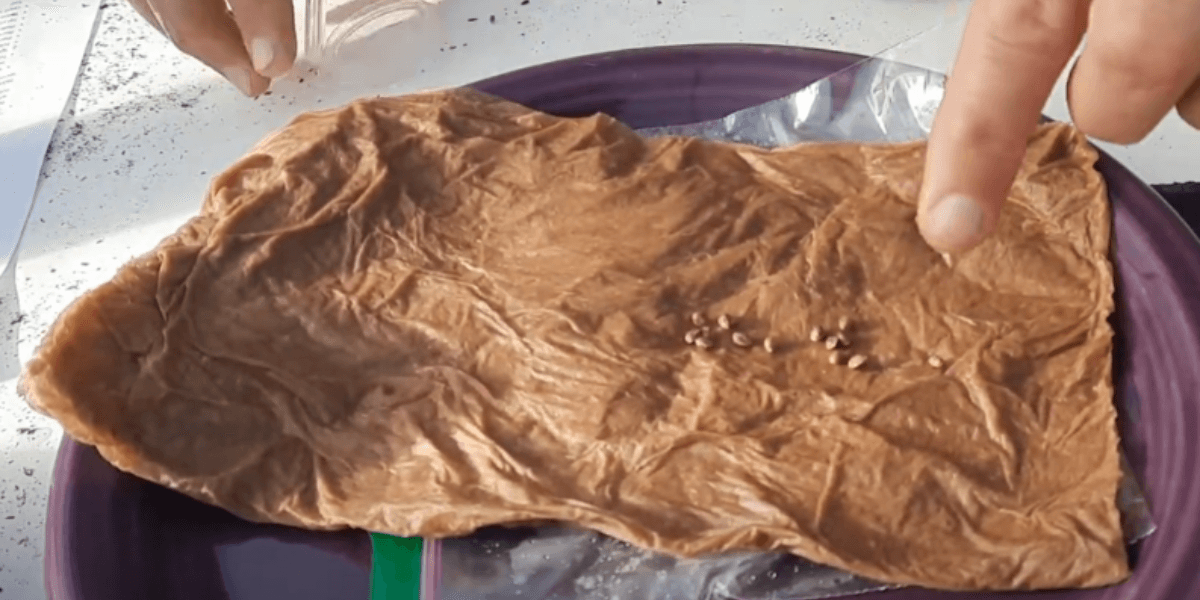
- Use water to moisten 2–4 paper towels. Wring out excess liquid, they should be wet but not dripping.
- Lay out half the towels and place the seeds on top, leaving some room between each one. Use the remaining towels to cover the seeds, sandwiching them between the two layers of paper.
- Carefully place the towels inside the plastic bag and seal it shut. Put the bag somewhere with an appropriate temperature out of direct sunlight.
- Keep a close eye on the seeds inside, and remove sprouted ones as soon as possible.
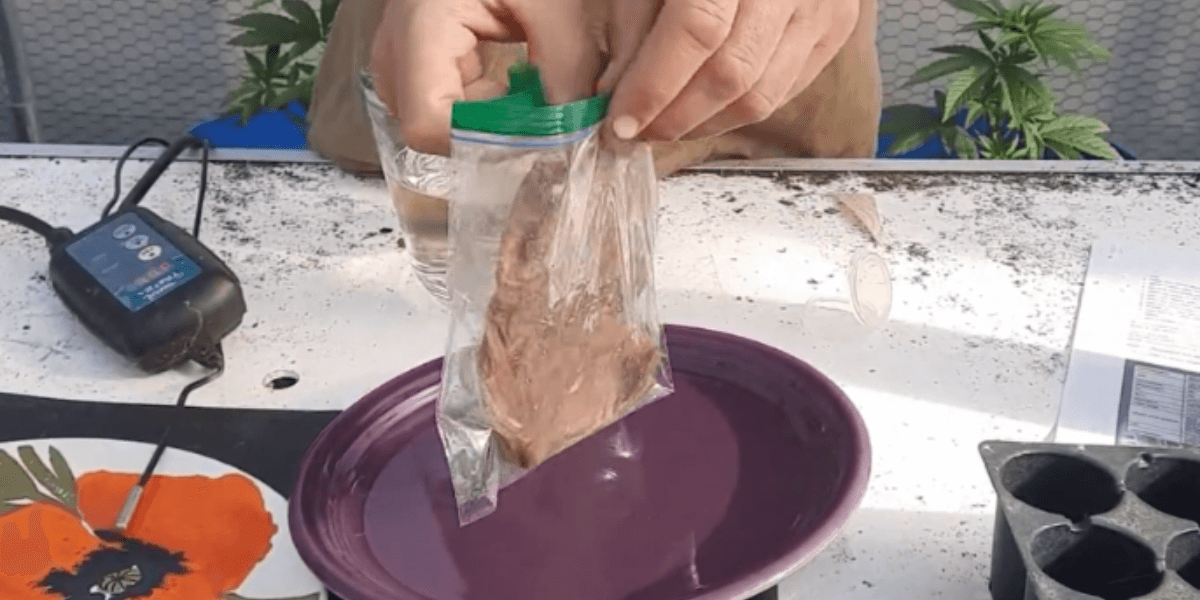
Remember that the bag also traps warmth, which may cause it to be hotter than the ambient temperature.
Germinating cannabis seeds in hydrogen peroxide
Over the years, most cannabis enthusiasts have accumulated random seeds. This interesting method is the best way to germinate marijuana seeds that have been sitting around for a long time.
Chemically similar to water, hydrogen peroxide possesses an additional molecule of oxygen that stimulates germination. The substance also kills off any harmful microorganisms on the seed while simultaneously softening its shell.
- Pros: Most healthy seeds germinate within 24 hours using this method.
- Cons: Requires additional expense; handling may cause irritation of the airways.
What will you need?
Take care when handling the following:
- Purified or distilled water.
- 3% Hydrogen Peroxide.
- A wide-necked glass to hold the solution and seeds.
Germination of seeds in 3% hydrogen peroxide method: Step-by-step

Here are the steps to successfully sprout your seeds in hydrogen peroxide:
- Make up your solution by adding 10ml of 3% hydrogen peroxide to 170ml pure water, mixing thoroughly.
- Deposit the seeds in the solution and allow them to soak overnight.
- Check back after 24 hours, and you should see sprouting taking place. Most seeds germinated in this way open within a day, but particularly old or stubborn ones may take 2–3 days.
- As with the straight water method, immediately move any opened seeds from the glass to their starter pots.
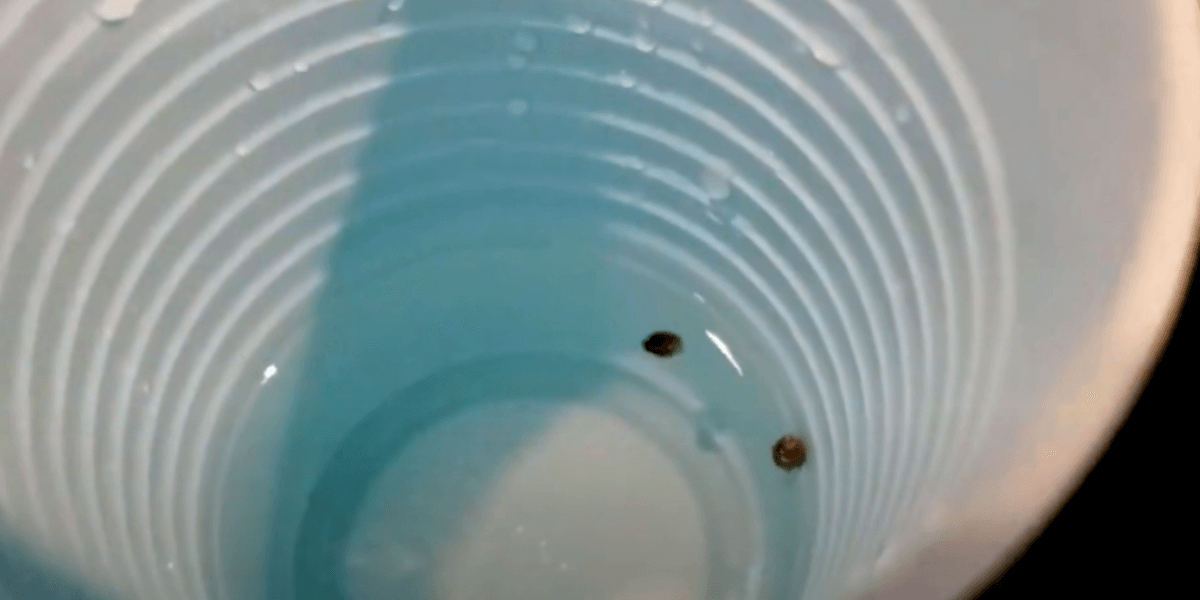
Frequently asked questions about the cannabis germination process
Here are some of the most common queries new growers tend to have about the germination process.
What is the ideal temperature for cannabis sprouting?
Maintaining the ideal temperature for cannabis at all stages of growth goes a long way toward a healthy crop. When germinating marijuana seeds, getting the conditions right makes for fast, successful sprouting.
The idea is to mimic spring weather conditions when seeds are naturally sprouting in the wild. Maintain a temperature range of 69.8°F–78.8°F.
How much light do weed seeds need to germinate?
While you need illumination from the sun or cannabis grow lights once your seedlings have sprouted, the germination process itself doesn’t require any. It’s not necessary to sprout marijuana seeds in complete darkness, but you should avoid intense light.
Germinating in a windowsill or other moderately lit area is fine if the temperature isn’t too high. Another reason some growers prefer darkness is because it’s easier to maintain high humidity without light causing moisture to evaporate.
Do good seeds sink and bad seeds float?
If you decide that the best way to germinate your marijuana seeds is in water, you may notice some floating. Cannabis seeds that continue to sit at the top of the water after 12–24 hours are most likely non-viable.
While it’s true that all bad seeds float, it’s not true that all the ones at the top are bad. They may take some time to take in water and gain the extra weight to sink. It’s also possible that microbubbles on the surface of the seed are increasing its buoyancy.
The float test is a helpful way of determining viability, but don’t throw out your seeds if they don’t immediately sink. Give them time to absorb the water and check again after several hours.
What to do with a weed seed after germination?
Our advice is to take your germinated marijuana seeds, plant them, and raise a productive crop of marijuana to enjoy.
Unless you’re using feminized seeds, you need to wait for the vegetative stage to determine the plants’ gender, as there’s no way to identify female seeds.
How long does it take for weed seeds to sprout?
In favorable environmental conditions, cannabis seeds sprout in as little as 24 hours. The further conditions stray from the ideal, the longer it may take for them to pop open.
Another factor affecting the speed of germination is seed casing thickness. Those with tougher exteriors take longer to absorb the moisture needed to begin sprouting. Generally speaking, most quality cannabis seeds sprout within 1–6 days.
How do I plant weed seeds after germination?
Whether you’re growing outdoors or cultivating indoor weed seeds, the process remains the same. Planting marijuana seeds is straightforward and something you’ll get the knack for over time.
Before planting, prepare your container by filling it with loosely packed soil. Use your thumb to press out a hole about a half inch deep in the center of the pot. Carefully take the opened seed using sterile tweezers and place it into the previously made hole in the soil.
Before covering it, ensure the taproot or radicle points towards the bottom of the pot. While geotropism allows the radicle to sense the correct way to grow, positioning it correctly now saves energy used to reorient.
Keep your freshly sprouted seed moist, but avoid overwatering. Cannabis fertilizers aren’t necessary until your seedling develops two or three pairs of leaves. Until then, dechlorinated water is sufficient.







